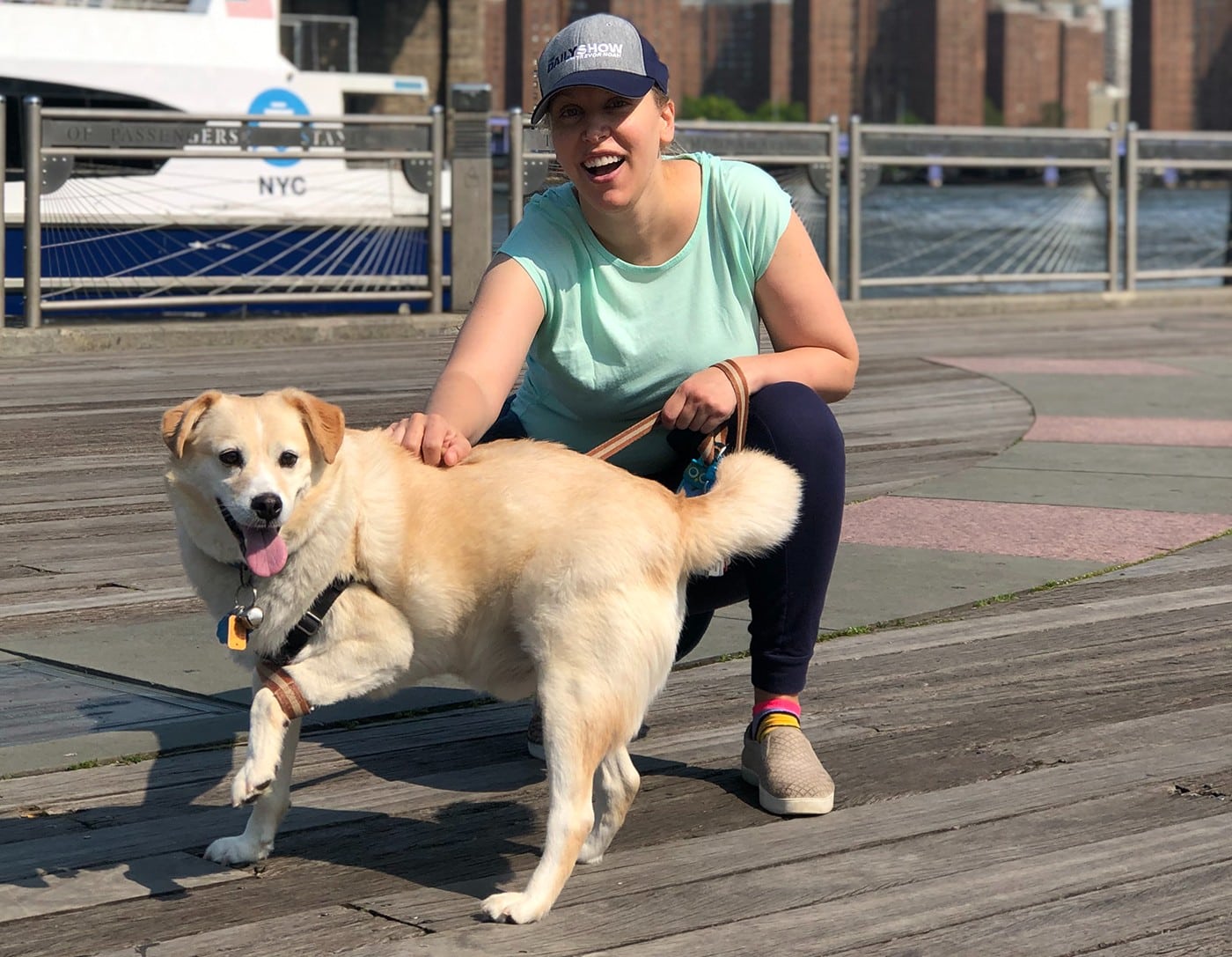Dog owners already know that their furry friends can provide lots of love and emotional support. But for people who are blind, dogs can take on an even more important role — helping them navigate safely through life. Everything from performing essential tasks such as stopping to indicate a change in elevation (like stairs) to navigating around objects in the way of the person’s walking path and providing companionship are important duties these dogs must perform every day.
While guide dogs may make the job look easy, the process behind placing these pooches out into the world can be quite complex, with dozens of organizations around the world training and providing these pups to the visually impaired.
One such organization, Guiding Eyes for the Blind, has been providing these pooches to the world for nearly 60 (human) years. The organization breeds about 500 puppies per year at its facility in Patterson, New York, with about 95 percent being Labrador retrievers and a small amount of German shepherds and golden retrievers. By breeding their own dogs, Guiding Eyes has been able to create a pool of pups more likely to be successful guides. For example, Guiding Eyes has been able to almost entirely breed out hip or elbow dysplasia so that the dog doesn’t have to retire early (The dogs tend to work until they’re about nine.)
Related: This Seeing Eye Dog’s Former Owner Is the ‘Blind Wine Chick’
After spending the first eight weeks of their life at the Patterson development center where they socialize with volunteers and staff, the puppies get tested to see how they react to a variety of stimuli and work with people. During this evaluation this staff wants to see if the guide dog can maintain focus in the face of would-be distractions such as other dogs, humans or cars. From the test, the staff at Guiding Eyes can determine if the dog has a good chance of becoming a guide (roughly half of those bred each year do). If so, the dog then gets matched with a volunteer “puppy raiser,” which is a person or family who takes the dog through the next stage of development.
To become a puppy raiser, “We say they have to love dogs and want to make a difference in the world, and those are really the only requirements,” says Michelle Brier, director of marketing and communications at Guiding Eyes. These puppy raisers live in Maine down to North Carolina and out to Ohio, with Guiding Eyes splitting this area into 38 regions, each supervised by a Guiding Eyes staff member.
Related: Meet a Blind Pup and His Inseparable ‘Guide’ Dog
Once placed in a home, puppy raisers are expected to teach the dog house manners and basic obedience, as well as attend weekly classes with their pooches to work on these basic skills with local Guiding Eyes staff.
When the puppies are about 18 months old, they come back to Guiding Eyes’ training facility in to work with a professional trainer. Here the trainer will put the dogs through their paces, in order to learn the necessary skills such as targeting specific destinations like the bank and being able to avoid hazards like oncoming cars. After training, the organization decides if the dog has the special touch to make it.
“A guide dog has to have the confidence to be that primary decision maker to say ‘You just told me to go forward but there’s a car coming, I’m going to back out of the way and essentially disobey you because I know I’m right,” explains Brier.
For the dogs that don’t become service animals, the puppy raisers have the first option to adopt the dog back, or the public can apply to adopt one of the pooches. The suggested donation for adoption is $1,500 for puppies and $3,000 for a young adult.
Related: ‘Property Brothers’ Build TODAY Show Dog an Amazing Play Area
When the dogs who are on track to become guides turn about two, it’s time to meet their match.
Every month at the Yorktown Heights center, 12 to 14 blind people stay at the facility for three weeks to get matched and learn how to work with their dogs. Participants come from all over the country (there was even a person from Brazil in Guiding Eyes’ March 2015 class) and are selected somewhat on a first-come, first-serve basis, but the organization also takes into account the need to find the right match.
“It’s paramount that our student be matched with dogs appropriate for their pace, personality and lifestyle. Some students may wait a little longer until exactly the right dog is available,” says Brier.
To receive a dog, a person has to be legally blind and have gone through orientation and mobility training to learn skills such as using a white cane. From the time of application to getting into a class to be matched with a dog, the average wait time is about three to five months, and when the participant comes to the Guiding Eyes training center, there are always more than enough dogs ready so the person can find the perfect fit.
From breeding through matching, along with follow-ups throughout the length of the dog’s service, a guide dog costs an average of about $50,000, yet all of this is provided free of charge to participants thanks to donations.
In all, Guiding Eyes places about 150 dogs into service annually and now has around 1,000 active guide dogs helping blind people around the world.
In addition to helping blind people, Guiding Eyes also started a secondary program in 2008 for children with autism. Not all of the dogs have the right characteristics to be a guide but some end up working with children with this disorder. Guiding Eyes now places about 12 of these dogs per year, with 61 currently working.
“We could have a wonderful dog that doesn’t have that one skillset or that high enough of a confidence level but wants to work, wants to have a job, loves being around people and has the truly special ability to cope with a child who may have atypical reactions,” Brier says.
These dogs find their careers by being able to adapt to the child’s behavior.
“Children with autism tend to spin, have tantrums and meltdowns, and whereas those behaviors can be off putting sometimes for certain dogs, these dogs want to be mushier and softer and more connected in these moments,” adds Brier. “They’re truly special.”
While these dogs provide a valuable service to children with autism and their families, the primary focus of Guiding Eyes will continue to be providing dogs for the blind.
“Guiding Eyes dogs profoundly transform people’s lives,” says Brier. “They can help individuals and families find new confidence to tackle all life’s adventures, no matter how big or how small.”
Related: The Today Show Gets a New Co-Host
Images via Guiding Eyes for the Blind























